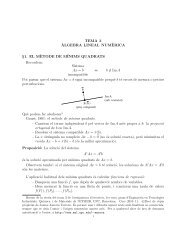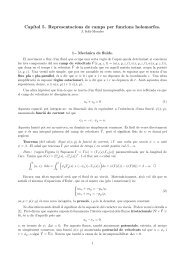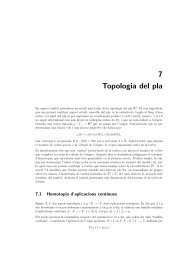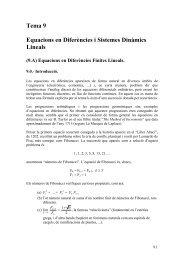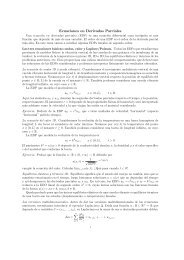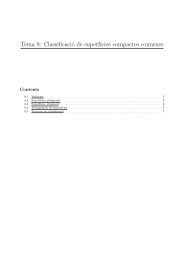Biomechanical Validation of Upper-body and Lower-body Joint - UPC
Biomechanical Validation of Upper-body and Lower-body Joint - UPC
Biomechanical Validation of Upper-body and Lower-body Joint - UPC
Create successful ePaper yourself
Turn your PDF publications into a flip-book with our unique Google optimized e-Paper software.
studies. Because <strong>of</strong> that, we aim to use it when<br />
such accuracy it is not needed, like clinical<br />
rehabilitation where the correctness <strong>of</strong> a motion<br />
can be validate without been extremely precise.<br />
For these kind <strong>of</strong> applications, in this paper we<br />
consider the validation <strong>of</strong> the Kinect data in<br />
terms <strong>of</strong> joint angles when motion <strong>of</strong> the main<br />
limbs is involved. We compare these data with a<br />
pr<strong>of</strong>essional motion capture equipment <strong>and</strong> we<br />
compute the error along the complete capture.<br />
For the biomechanics community <strong>and</strong> clinical<br />
therapy in general, it is needed a validation<br />
<strong>of</strong> the precision <strong>of</strong> this new devices <strong>and</strong> to<br />
underst<strong>and</strong> the possible appropriate applications<br />
for these cheap <strong>and</strong> portable technology. As it<br />
is shown in section 4, the obtained accuracy<br />
for the measurements <strong>of</strong> the angle joints are<br />
enough for most <strong>of</strong> the prescribed exercises in<br />
rehabilitation treatments. As a conclusion, we<br />
think that a new series <strong>of</strong> useful applications<br />
using these new technology can be developed<br />
according to our results.<br />
The rest <strong>of</strong> the paper is organized as follows:<br />
section 2 describes the equipment used in our<br />
study, section 3 describes the motion capture<br />
performance <strong>and</strong> in section 4 we present the results.<br />
2 Equipment description<br />
Motion capture is the process <strong>of</strong> registering<br />
movements performed by a person, who is<br />
called actor, by some mechanisms or devices.<br />
Motion capture systems can be categorized in<br />
two main groups: markers motion capture or<br />
markerless motion capture. Capturing motion<br />
with markers implies using some kind <strong>of</strong><br />
sensors or devices that the actor must wear to<br />
help cameras recognizing motion or to send<br />
data to a manager system for further treatment.<br />
This fact can produce some distortion in motion<br />
because actor could be uncomfortable or simply<br />
constrained for this devices. In the other h<strong>and</strong>,<br />
markerless motion capture avoid these problems<br />
because is based on computer vision algorithms<br />
that deal with images from capturing cameras.<br />
Although, this type <strong>of</strong> motion capture usually<br />
has less precision than markers one.<br />
Markerless motion capture is based on how<br />
computer vision algorithms interprets captured<br />
images from cameras. There is a lot <strong>of</strong> literature<br />
about this type <strong>of</strong> algorithms. Moeslund has<br />
been done an extens review in [14] [15]. In<br />
addition to the algorithms is very important the<br />
type <strong>of</strong> the cameras <strong>and</strong> the set up. Markerless<br />
motion capture could be done using a camera,<br />
using stereographic cameras, 3D cameras or<br />
multiple cameras. Using only a unique camera<br />
avoid synchronization problems faced by<br />
systems with multiple cameras, although these<br />
increase precision in tracking results.<br />
In this project, we have been compared<br />
motion capture data from Kinect against optical<br />
motion capture data. In the following points<br />
there is a description <strong>of</strong> both used systems.<br />
2.1 Optical Motion Capture<br />
As we have mentioned before, optical motion<br />
capture systems are the most popular <strong>and</strong> the<br />
most used in videogames <strong>and</strong> medical fields.<br />
In [16][17] there are an extensive explanation<br />
<strong>of</strong> optical motion capture process detailing<br />
all steps included. A typical optical system<br />
consists in a set <strong>of</strong> cameras from 4 to 32 <strong>and</strong><br />
a computer that manage them. Usually, actor<br />
takes some markers that are reflective (passive)<br />
or emitters (active). Passive markers are made<br />
with reflective materials <strong>and</strong> its shape is spherical,<br />
semispherical or circular. Markers are<br />
place directly over actor skin or over an elastic<br />
suit. In passive systems, cameras are equipped<br />
with infrared LEDs diodes <strong>and</strong> light emitted is<br />
reflected by markers. In the other h<strong>and</strong>, markers<br />
in active systems are LEDs.<br />
Cameras in these systems can capture between<br />
30 <strong>and</strong> 2000 frames per second. At least,<br />
two cameras have to visualize one marker in<br />
order to determine its 3D position, although it<br />
is better than three or more cameras for better<br />
precision. In some occasions, who is been<br />
captured, or another actor, or some object can<br />
occlude some <strong>of</strong> the markers. When these<br />
occlusions exist, any camera can see these<br />
markers <strong>and</strong> this cause data losing. After



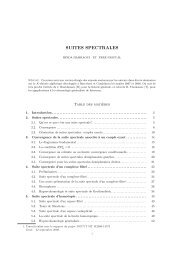
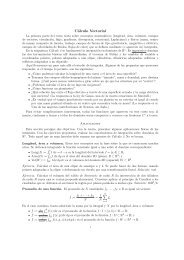
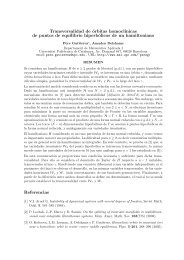
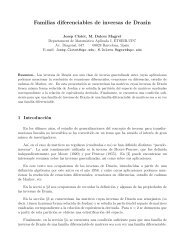
![INTEGRALES ELÍPTICAS COMPLETAS Dado un parámetro m ∈ [0,1]](https://img.yumpu.com/14067465/1/184x260/integrales-elipticas-completas-dado-un-parametro-m-01.jpg?quality=85)


